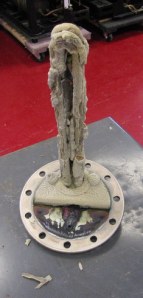Informational content provided by Jamie at immersionheaters.uk
Call on 07897 246779.
Remembering all of the aspects and considerations discussed on the “How to choose an immersion heater” page, water hardness must be taken into account when designing a water immersion heater.
A detailed description of water hardness can be found HERE, but for the purposes of this blog, we will say that hard water has a higher concentration of calcium and magnesium which leads to limescale, which we are all familiar with in kettles, etc, within the home. Whilst merely being an inconvenience in the home, (one that can be avoided by using one of these beauties which are awesome and well worth the money if like me you consume litres of water a day, highly recommend, no business interests or bias by bungs!) it can be a real issue in commercial and industrial applications.
The problems are caused by the limescale deposits building up on the hot part of the elements. Once this process starts, it becomes self perpetuating, and indeed self accelerating, if not removed by jet washing, disolving or other means. Basically, the limescale build up prevents the heat getting away from the element, acting like an unwanted insulating jacket, increasing the element surface temperature, which in turn, attracts more deposits. An example of which is shown below, courtesy of gimmecoffee.com, which would perhaps be better used as a christmas tree than for making coffee!
The easy way to maximise the working life of your immersion heaters, whether in a hard water area or not, is to minimize the Watts density. The article explains in detail a simple concept which we are using every day, maximise the element length THUS minimising the watts density THUS maximising the working life of the element, all other things being equal.
Informational content provided by Jamie at immersionheaters.uk Call on 07897 246779.
